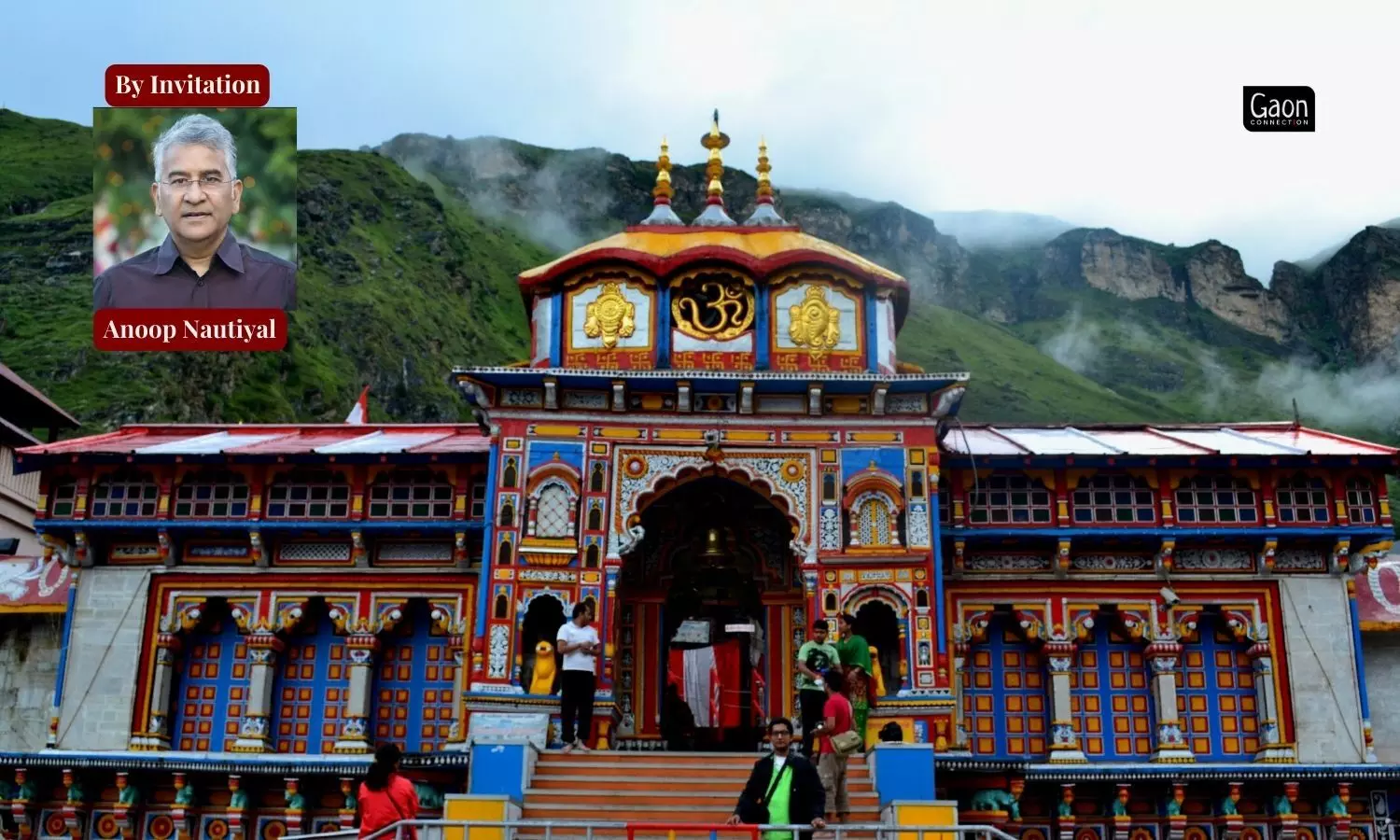Badrinath: From Holy Dham to a Smart Dham, via shopping plazas and a riverfront
Transformation of Badrinath in Uttarakhand into a Smart Dham is being executed by people who neither have any knowledge about the Himalayas, nor about the environment or the geological structure of the local landscape.
 Anoop Nautiyal 9 Oct 2023 6:49 AM GMT
Anoop Nautiyal 9 Oct 2023 6:49 AM GMT

Located at an elevation of more than 10,000 feet in the Garhwal Himalayas, on the banks of the Alaknanda river, the sacred town of Badrinath lies between the Nar and Narayana mountain ranges. A town and nagar panchayat in the Chamoli district of the Himalayan state of Uttarakhand, it is a Hindu sacred site and one of the four pilgrimage sites in India's much revered Char Dham pilgrimage.
Kedarnath in the district of Rudraprayag, and Gangotri and Yamunotri in the Uttarkashi district make up the rest of the holy Char Dham circuit.
After the Dehradun Smart City Mission began in 2017, the holy city of Badrinath is now to follow suit as a ‘Smart Spiritual Hill Town ’ in Uttarakhand. It has been referred to as a dream project of Prime Minister Narendra Modi. After the massive flood disaster of June 2013, many types of construction works were done in Kedarnath. In the same vein, there is now a plan to reconstruct and transform Badrinath into a Smart Dham with the Alaknanda riverfront and a plaza near the temple.
Amongst others, there will also be community cloak rooms, queue arrangements for pilgrims, beautification of lakes, roads and parking arrangements.
Work on this scheme was initiated even before the holy portals of Badrinath opened this year. In the first phase of the plan, many constructions around Badrinath bus stand and the temple have been demolished.
This initial phase led to a divide amongst the town’s inhabitants, with a section of the priests and local businessmen of Badrinath standing in support of this plan and the rest of the town in stout opposition.
Also Read: Three ways in which over-tourism is hurting Uttarakhand
However, the manner in which the Smart Dham plan has been carried out since, has left many in Badrinath dissatisfied as protests and dharnas are being held. These demonstrations are ongoing and continue as we speak.
At present there are piles of debris everywhere in Badrinath. About 60 shops, several dharamshalas and the residences of priests have been demolished at the foothills of Narayan Parvat near the temple. Heaps of debris are lying there.
Prahlad Dhara and Kurma Dhara, two of the sacred Panch Dharas of Badrinath, also came under the grip of the ongoing urban transformation. Both these streams were buried under debris.
After protests by the priests and local businessmen, the debris has since been removed from both these streams, but due to the huge amount of debris that remains immovable, there is no way to reach these streams. There is a locally famous Gopal temple near these streams. Although this temple has not been demolished, there is now no way to reach the temple because of the detritus surrounding it.
The right side of the Badrinath main temple has also been affected due to the Smart Dham construction. Some cracks have appeared here and some stones from the temple have also fallen apart. Arrangements have been made to stop this with iron girders.
Locals allege that the work of Badrinath Master Plan is being done in a careless and unscientific manner. The work is being executed by people who neither have any knowledge about the Himalayas, nor about the environment or the geological structure of the local landscape.
They remind that there were talks of reconstruction in Badrinath half a century ago in 1974. Back then, environmentalists like Chandi Prasad Bhatt, Govind Singh Rawat and Gaura Devi had staged protests along with the local residents.
In light of the protest, the then Chief Minister of Uttar Pradesh Hemwati Nandan Bahuguna formed a committee under the chairmanship of Narayan Dutt Tiwari to carry out an ecological investigation of the area. After examining all aspects including the environment, any construction work to be done in the name of beautification in Badrinath was completely banned.
Also Read: The land beneath their feet slips while authorities sleep
In light of the recents events, Sangharsh Committees have been formed to protest against the haphazard construction work going on in Badrinath. One of these is led by teerth purohit Shrish Koiyal. He said that no genuine consultation was done with local people, the community of priests and local businessmen before starting work on the master plan. The construction was carried out at a time when the holy portals were closed and people were not there.
Others claim that more than half of the debris from the demolition has been thrown into the Alaknanda river. The soil from the debris has washed away, but the stones remain, due to which the water level of Alaknanda has increased.
It appears that once again no heed has been paid to the perils of the fragile Himalayas. Government agencies, authorities and contractors continue to exploit the holy land in the name of smart development instead of protecting and upholding it.
The importance that Badrinath holds when it comes to pilgrimage and faith for millions is immense, yet that does not mean one should ravage it in the name of plazas, parking and progress. Do we really need our ‘Holy Dham’ to become a ‘Smart Dham’ without taking into account the fragility of the local environment?
Anoop Nautiyal is an Uttarakhand-based social worker. Views are personal.
#Badrinath #holydham #uttarakhand #demonstration
More Stories




